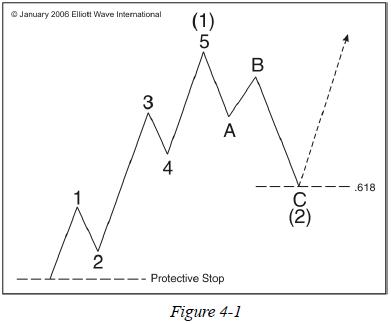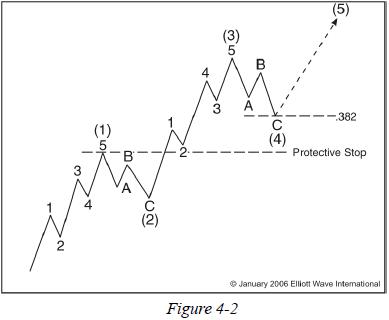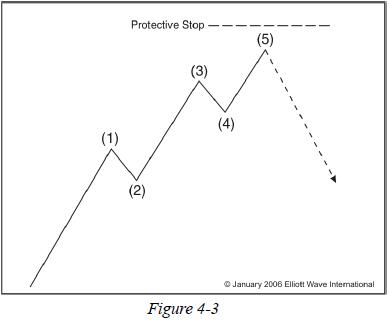How to Set Protective Stops Using the Wave Principle
InvestorEducation / Elliott Wave Theory Jun 20, 2011 - 05:21 PM GMTBy: EWI
 The 3 simple rules of Elliott wave analysis can help traders manage risk, ride market trends and spot price reversals.
The 3 simple rules of Elliott wave analysis can help traders manage risk, ride market trends and spot price reversals.
EWI's Chief Commodities Analyst Jeffrey Kennedy values the Wave Principle not only as an analytical tool, but also as a real-time trading tool. In this excerpt from Jeffrey's free Best of Trader's Classroom eBook, he shows you how the Wave Principle's built-in rules can help you set your protective stops when trading.
Over the years that I've worked with Elliott wave analysis, I've learned that you can glean much of the information you require as a trader - such as where to place protective or trailing stops - from the three cardinal rules of the Wave Principle:
1. Wave two can never retrace more than 100% of wave one.
2. Wave four may never end in the price territory of wave one.
3. Wave three may never be the shortest impulse wave of waves one, three and five.
Let's begin with rule No. 1: Wave two will never retrace more than 100% of wave one. In Figure 4-1, we have a five wave advance followed by a three-wave decline, which we will call waves (1) and (2). An important thing to remember about second waves is that they usually retrace more than half of wave one, most often making a .618 Fibonacci retracement of wave one. So in anticipation of a third-wave rally - which is where prices normally travel the farthest in the shortest amount of time - you should look to buy at or near the .618 retracement of wave one.

Where to place the stop: Once a long position is initiated, a protective stop can be placed one tick below the origin of wave (1). If wave two retraces more than 100% of wave one, the move can no longer be labeled wave two.
Now let's examine rule No. 2: Wave four will never end in the price territory of wave one. This rule is useful because it can help you set protective stops in anticipation of catching a fifth-wave move to new highs. The most common Fibonacci retracement for fourth waves is .382 retracement of wave three.

Where to place the stop: As shown in Figure 4-2, the protective stop should go one tick below the extreme of wave (1). Something is wrong with the wave count if what you have labeled as wave four heads into the price territory of wave one.
And, finally, rule No. 3: Wave three will never be the shortest impulse wave of waves one, three and five. Typically, wave three is the wave that travels the farthest in an impulse wave or five-wave move, but not always. In certain situations (such as within a Diagonal Triangle), wave one travels farther than wave three.

Where to place the stop: When this happens, you consider a short position with a protective stop one tick above the point where wave (5) becomes longer than wave (3) (see Figure 4-3). Why? If you have labeled price action correctly, wave five will not surpass wave three in length; when wave three is already shorter than wave one, it cannot also be shorter than wave five. So if wave five does cover more distance in terms of price than wave three - thus breaking Elliott's third cardinal rule - then it's time to re-think your wave count.
The Best of Trader's Classroom presents the 14 most critical lessons that every trader should know. You can download the entire 45-page eBook with a free Club EWI Membership. Download the free Best of Trader's Classroom now.
This article was syndicated by Elliott Wave International and was originally published under the headline How to Set Protective Stops Using the Wave Principle. EWI is the world's largest market forecasting firm. Its staff of full-time analysts led by Chartered Market Technician Robert Prechter provides 24-hour-a-day market analysis to institutional and private investors around the world.
About the Publisher, Elliott Wave International
Founded in 1979 by Robert R. Prechter Jr., Elliott Wave International (EWI) is the world's largest market forecasting firm. Its staff of full-time analysts provides 24-hour-a-day market analysis to institutional and private around the world.
© 2005-2022 http://www.MarketOracle.co.uk - The Market Oracle is a FREE Daily Financial Markets Analysis & Forecasting online publication.



